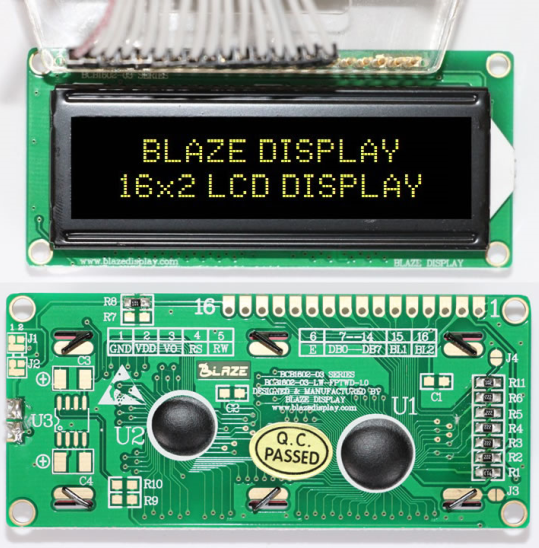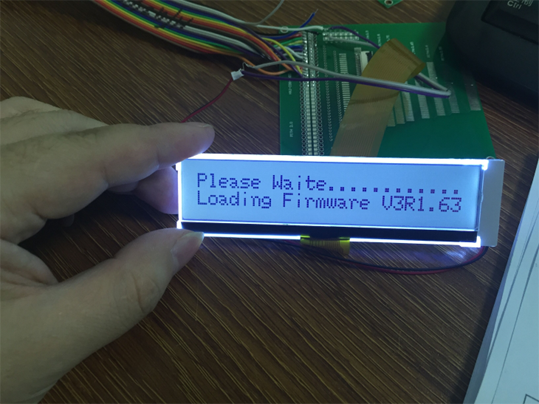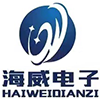【R&D Department of Dong Xian Display】Dong Xian Display implements a variety of integrated circuit mounting methods in designs of printed circuit boards used with standard and custom made liquid crystal modules. Dong Xian Display has full production capabilities that incorporate design requirements for the following IC mounting technologies:
Surface Mounting Technology (SMT)
Tape Automated Bonding (TAB)
Chip-On-Board (COB)
Chip-On-Glass (COG)
Chip-On-Flex (COF)
During the days of high demand of integrated circuit components on the LCD market, Dong Xian Display manages to keep firm control of receiving IC supplies from contractors. Despite the shortage of micro-controllers and drivers in the LCD industry, it is entirely within Dong Xian Display capabilities to provide its customers with large quantities of high quality electronic chips supporting the present product line.
SMT
Surface Mounting Technology (SMT) using quad flat packages on printed circuit boards was the most popular at the early years of liquid crystal display industry, and is still available for mass production.
Plastic Quad Flat Package (QFP) represents itself as a flat rectangular integrated circuit package with its leads projecting from all four sides of the package without radius. Used with surface mounting method. Made of black epoxy resin. Very moisture absorbent
COB
Chip-on-Board (COB) is a popular IC mounting method that provides wire bonding as the direct attachment of bare die to laminated printed circuit boards. The LCD driver is formatted into an area on the PCB. Electrical connections are made by micro diameter gold wires. The entire area is then covered with epoxy. All of Dong Xian Display´s standard Character LCD modules are of the Chip-On-Board design.

Advantages:
Very compact
Space savings over Surface Mount Technology assembly.
Cost savvy comparatively with SMT, since there is no plastic package
COG
Chip-On-Glass is one of the high-tech mounting methods that uses Gold Bump or Flip Chip IC´s, and implemented in most compact applications. Chip-On-Glass integrated circuits were first introduced by Epson. In flip-chip mounting, the IC chip is not packaged but is mounted directly onto the PCB as a bare chip. Because there is no package, the mounted footprint of the IC can be minimized, along with the required size of the PCB. This technology reduces a mounting area and is better suited to handling high-speed or high-frequency signals. Currently, there are 12 standard C.O.G. LCD modules available at Dong Xian Display with the regular mass production delivery time.

Advantages:
Very space economical. Chip-On-Glass LCD modules can be as thin as 2 mm.
Cost effective over COB, especially in graphic LCD modules, because much less IC´s are required.
More reliable than TAB because of the weakness in the bond area of TAB.
Disadvantages:
COG can only be used at a certain resolution level where the lines are not too fine. At very fine pitches COG becomes difficult to test, and TAB is the preferred approach.
It may be more cost-effective to use TAB or COB, if a designer has to integrate a keypad or indicator around the display.
The active area is not centered within the outline but offset, because of the area where the circuits are.
Since the Chip-On-Glass integrated circuit has been invented by Epson, COG technology became very popular due to the demand for more compact applications. In the near future we will see this IC mounting method finding its applications in many other equipment than cellular phones, PDA´s, computer network servers, satellite receivers, etc.
TAB
Tape Automated Bonding (TAB) LCD driver or controller electronics are encapsulated in a thin, hard bubble package, of which the drive leads extend from the bubble package on a thin plastic substrate. The adhesive along the edges is used to attach the TAB to the LCD glass and/or PCB.
Tape Automated Bonding IC mounting method uses the same type of integrated circuits as Chip-On-Glass technology - Gold Bumped Flip Chips. After this type IC chip has been produced, we a gold bump is placed on the IC chip and then sealed onto the polymide board. (This procedure is called ILB or Inner Lead Bonding) and is how the TCP IC is produced. TAB LCD modules are always custom made from Tianma.
Advantages:
Offers compactness (IC and its interfacing circuitry can be bent behind the LCD glass panel).
Some times more cost-effective than Chip-On-Glass, if a designer has to integrate a keypad or indicator around the display.
The active area is centered (differently from COG).
Can provide interfacing at very fine pitches.
Disadvantages:
The bonding area is weak. Less reliable than COG.
More expensive than COG. Even though TAB LCD modules use the same type of IC as COG, tape automated bonding requires a package.



